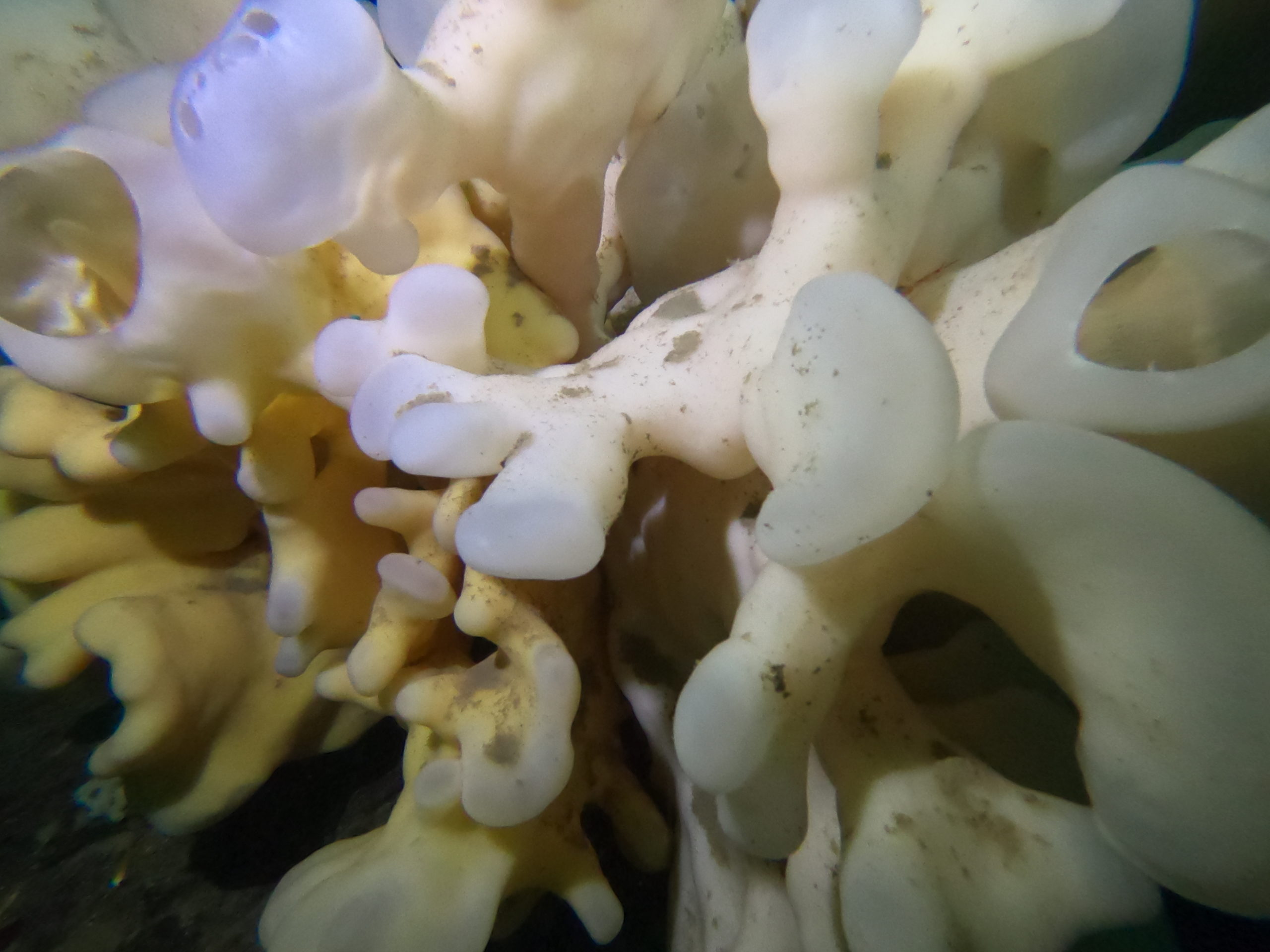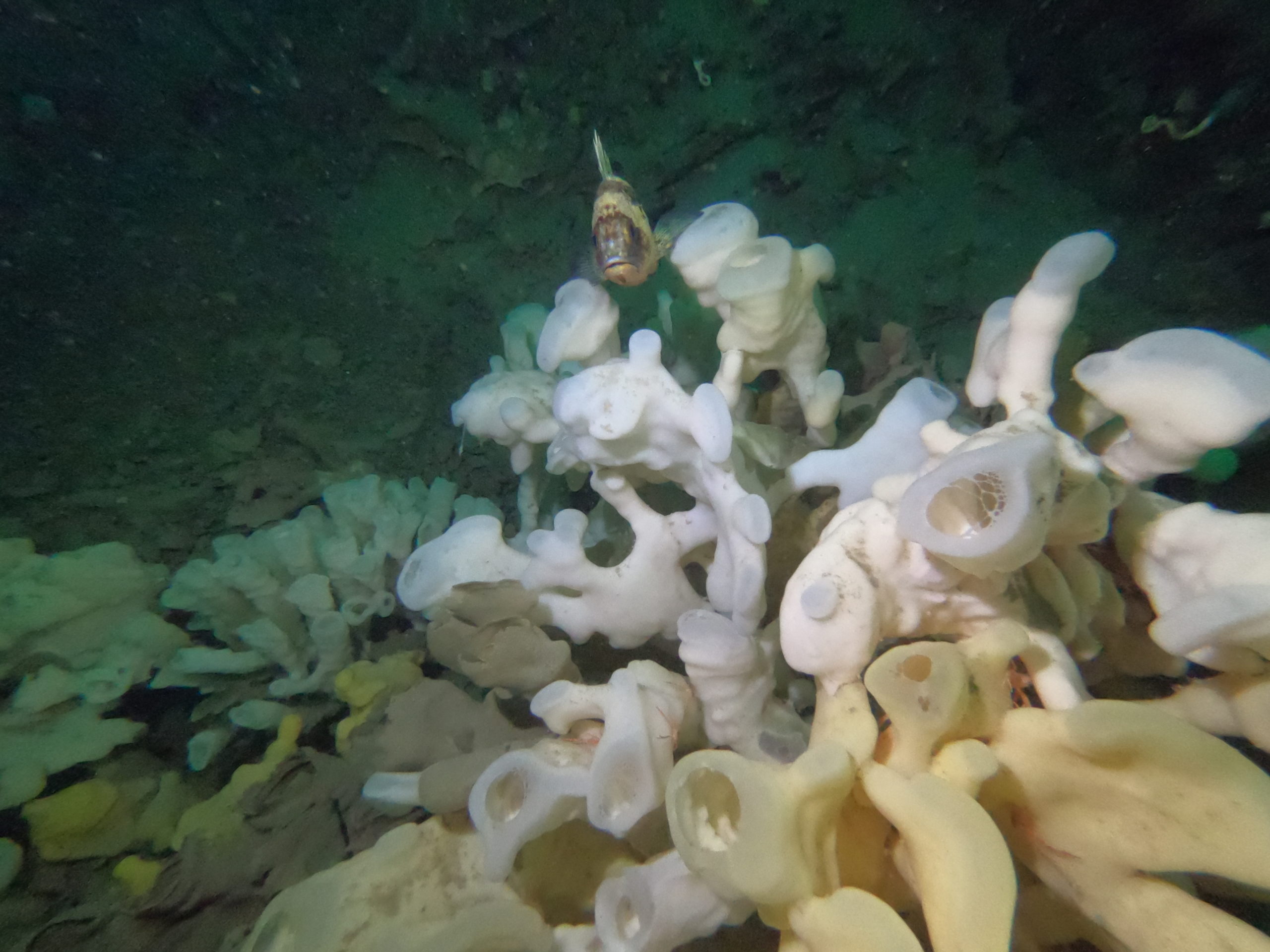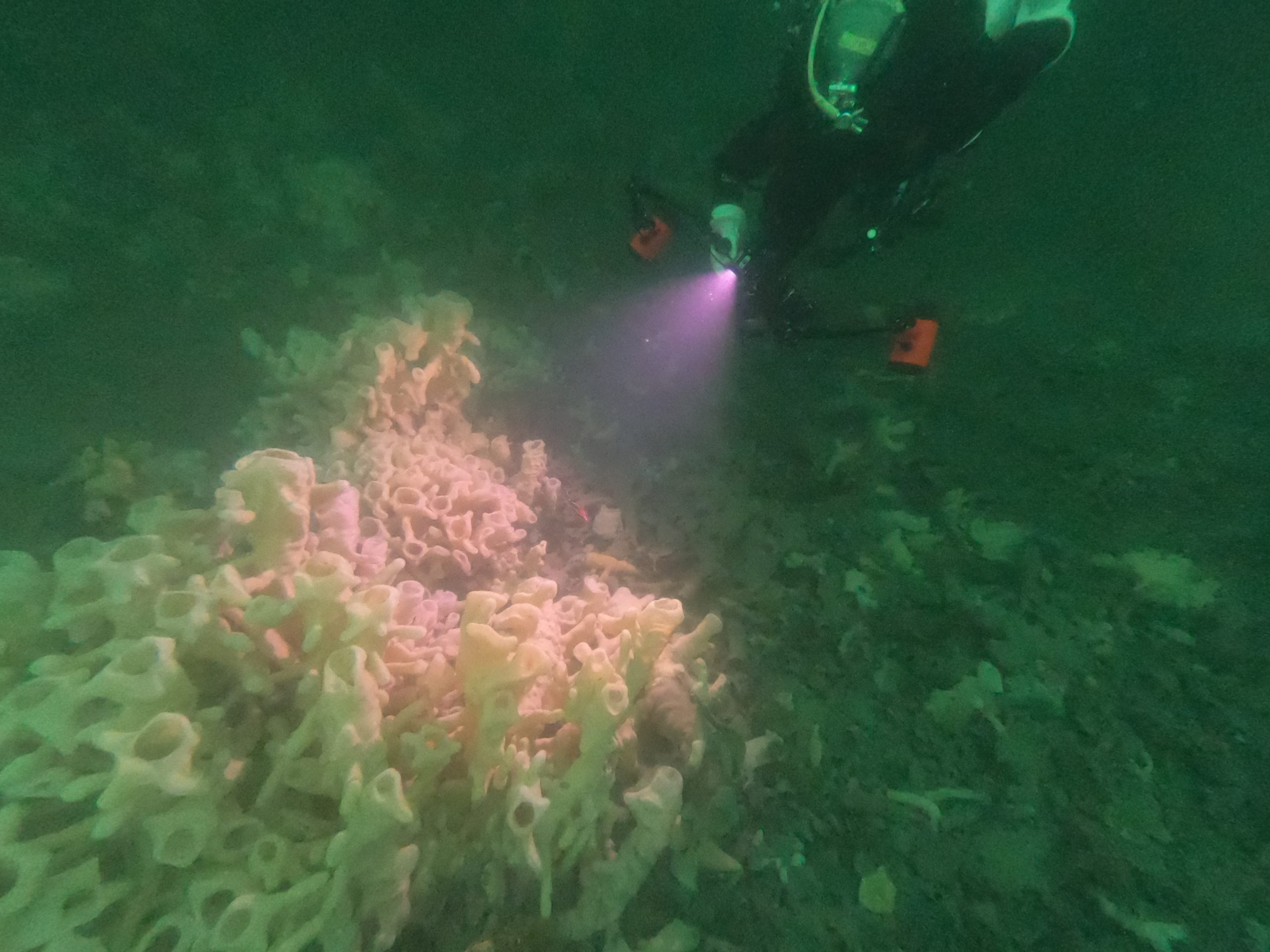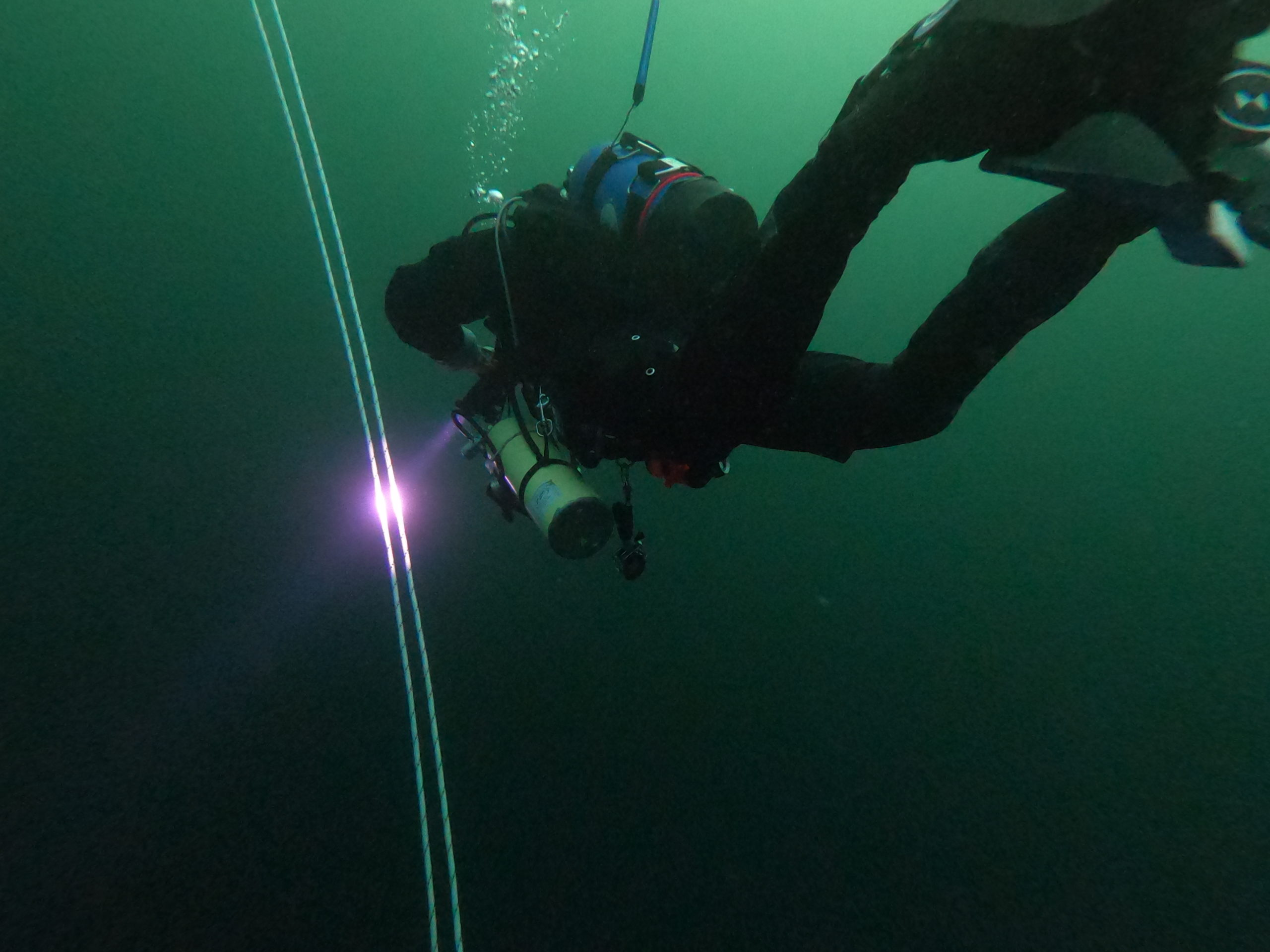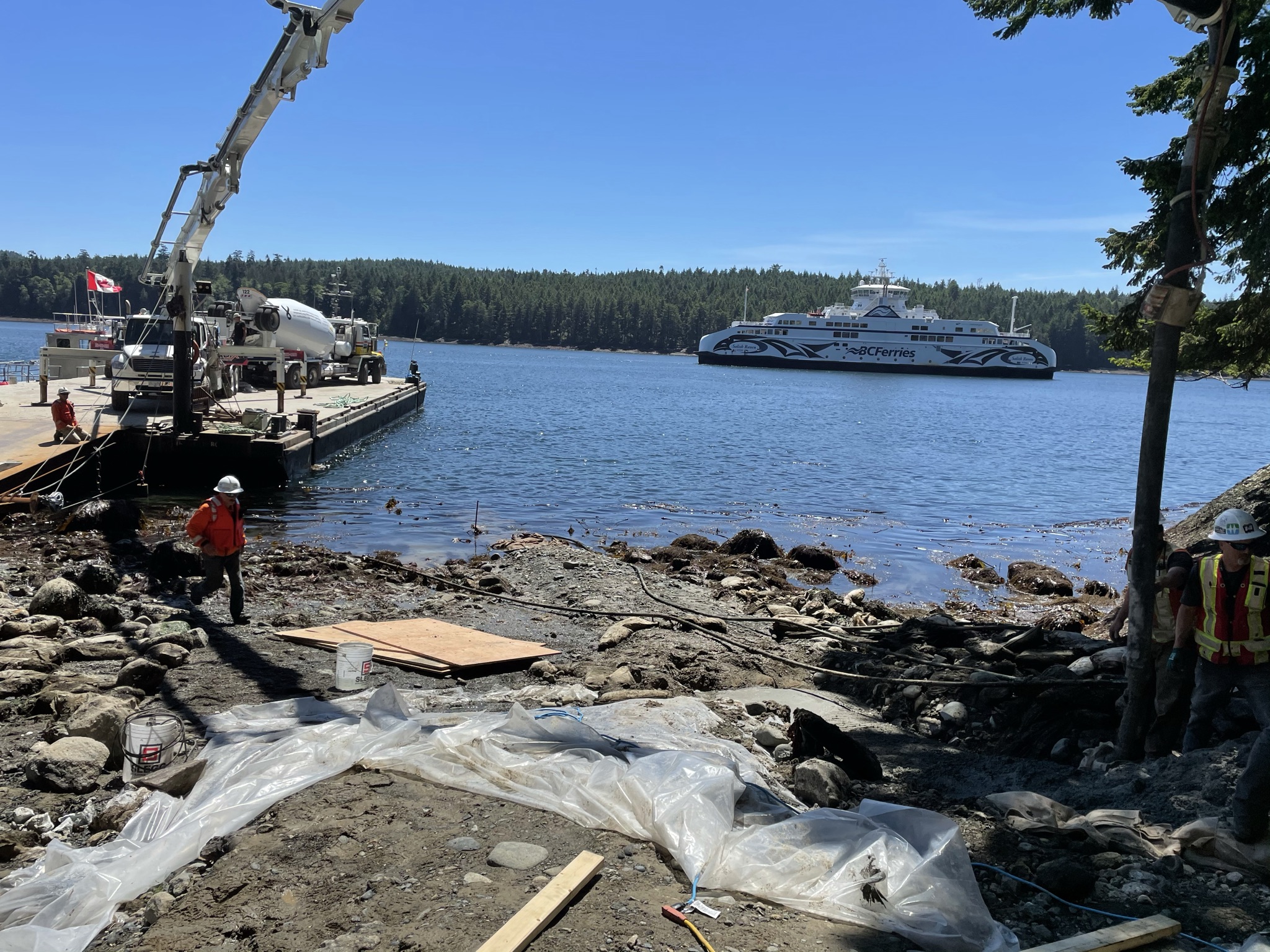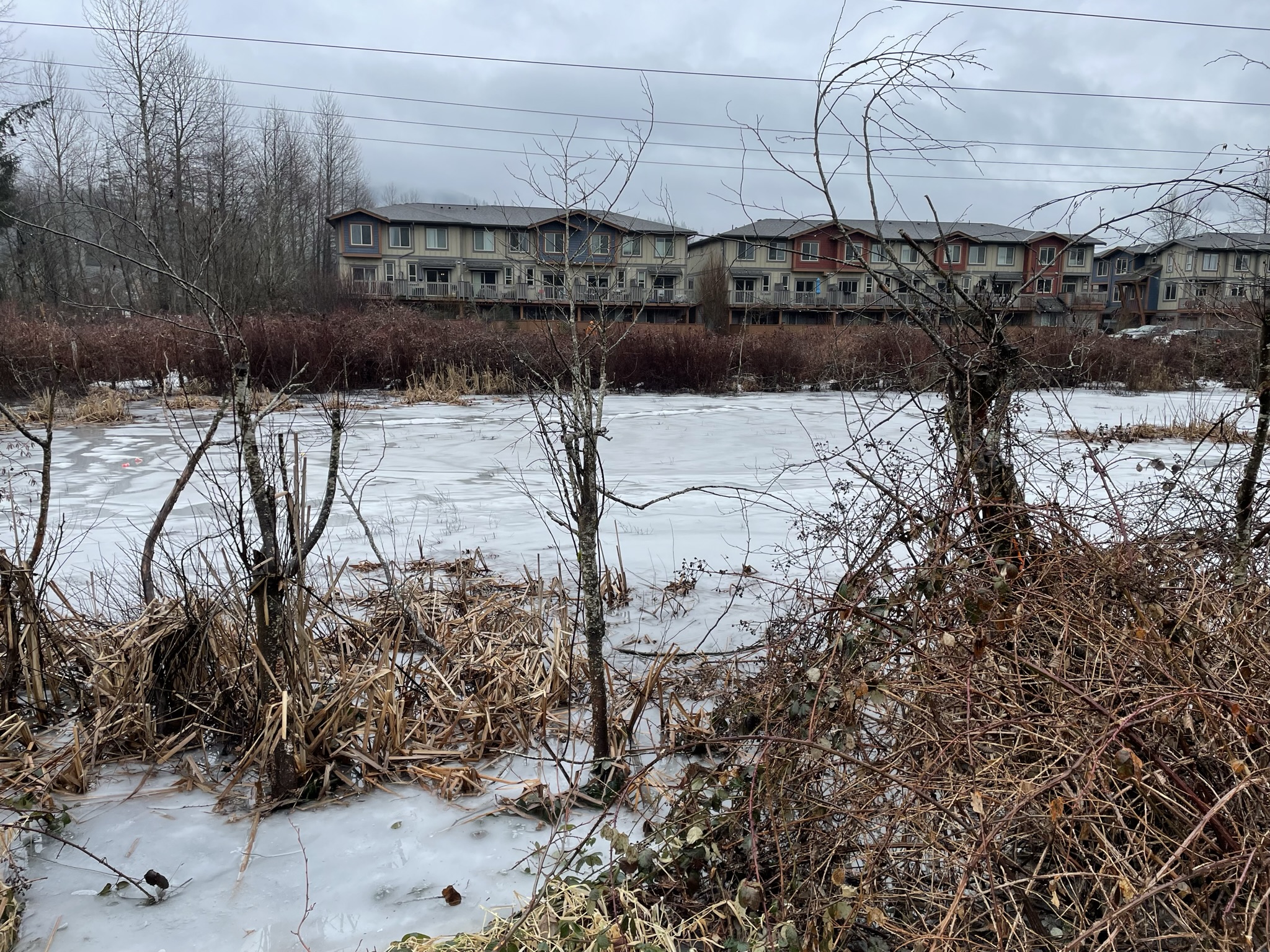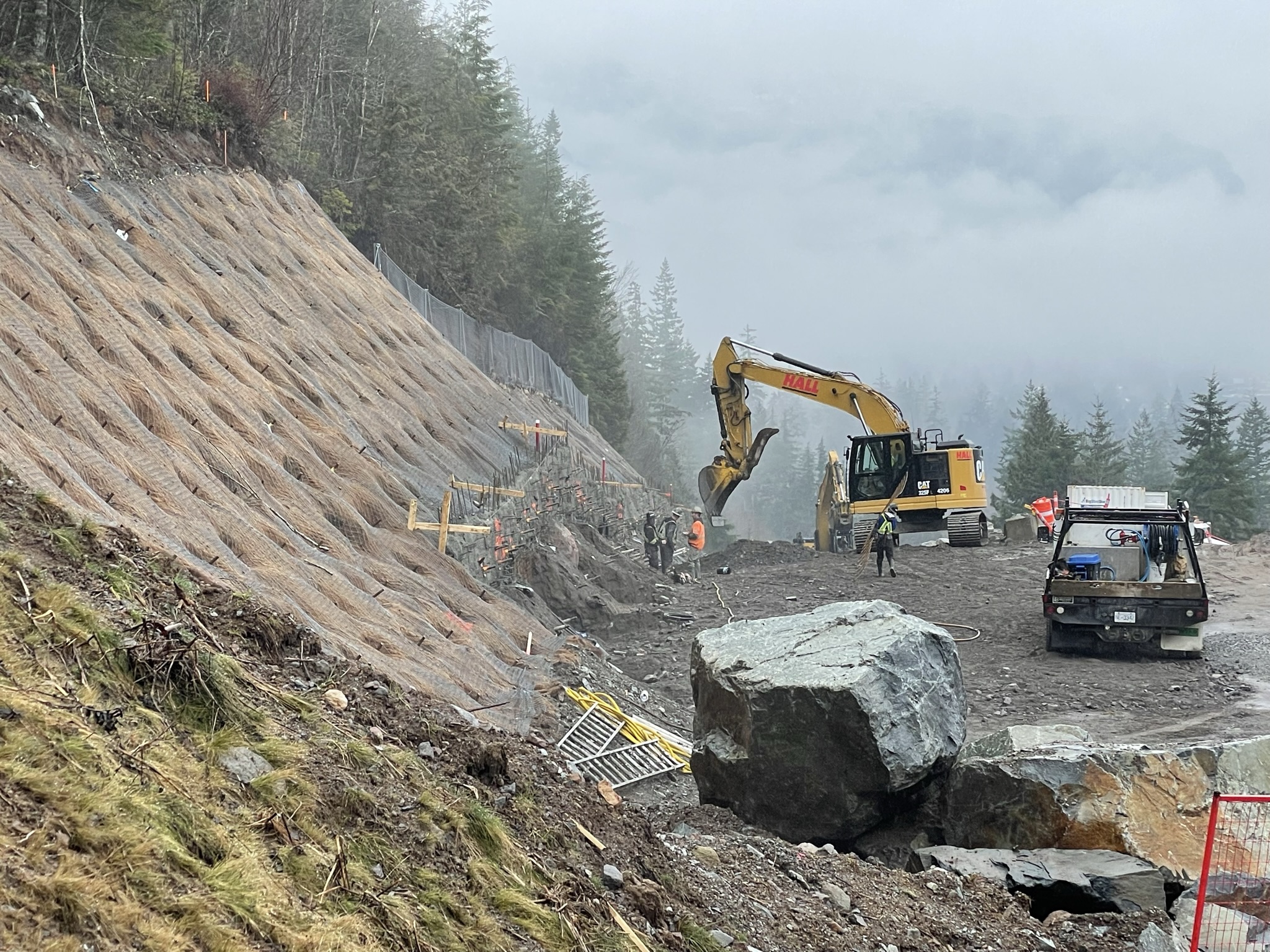Glass sponge reefs occur at specific locations along Coastal British Columbia in deep water where the sponge can access microbial food particulates delivered by currents. The sponge skeleton is made up of numerous six-sided glass rods, or spicules, which form a scaffold that provides a stable surface for sponge larvae to settle and grow. Generations of sponge-on-sponge growth creates a sponge bioherm. Much like a forest is supported by a vast underground root system, a sponge bioherm survives and thrives on a vast network of sub-benthic glass spicules obscured by constantly accumulating marine sediment. However, instead of receiving nutrients from the roots as a forest does, the living sponge feeds on bacteria and picoplankton that are delivered from the highly productive photic zone above. These microscopic animals are filtered out and consumed by the sponge, with the wastes expelled through a large central column known as an osculum.
The glass sponge reefs are important because they provide a refuge, feeding, and rearing habitat for a diversity of species, including rockfish. Unfortunately, the delicate nature and slow growth rate of glass sponges make them highly vulnerable to damage from physical, biological and chemical stressors. The damage or death of a sponge reef impacts the entire ecosystem that depends on it, including species important to aboriginal, recreational, and commercial fisheries in British Columbia.
Howe Sound is home to several glass sponge reefs. As of 2022, DFO has designated 18 areas in Howe Sound off-limits to bottom contact fishing, protecting some of these reefs. Damage still occurs to the reefs, whether they are protected or not, and even protected reefs have evidence of illegal fishing damage. Lora Tryon of LTE is a volunteer diver and President of the Marine Life Sanctuaries Society of British Columbia (MLSSBC) and is involved in the protection of sponge reefs in Átl’ka7tsem / Howe Sound.
Marine Life Sanctuaries Society
Oceanwatch report: Glass Sponge Reefs: a new opportunity for conservation research


